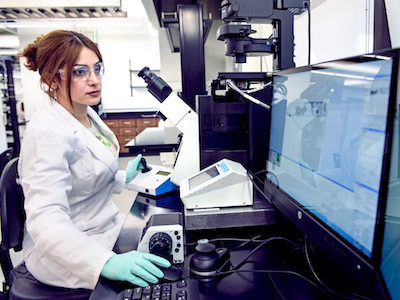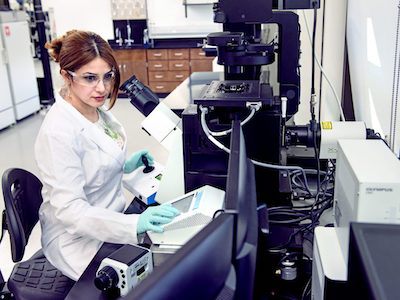Therefore, extracting maximum value from these wells requires a good grasp of fundamental mechanisms involved in deposition process. To reach to a better understanding of the mechanism of asphaltene deposition in crude oils and characterize the deposited fractions at ambient and reservoir conditions, we are using different microfluidic and capillary tube configurations combined to high-resolution imaging techniques.
One of the instruments in use at the COIFPM is the IX83 inverted Olympus microscope. The fully motorized IX83 is the most advanced member of the IX3 series of inverted imaging systems and offers a new level of application flexibility, which provides the ability to perform a multitude of imaging applications, from long-term time-lapse imaging and other demanding techniques to routine testing and documentation. The microscope enables high-speed, fully automated device selection during active research and advanced image acquisition to provide excellent expandability. The imaging techniques available on this microscope enable researchers to estimate the precipitant amounts, which are selected to allow asphaltene aggregation and deposition to evolve in-situ under diffusion-limited, shear rate conditions. In addition, using high-resolution images, researchers are able to characterize the deposits that in turn help shed light onto their structure and deposition mechanisms. These findings are used to select polymers and novel surface coatings that are most suitable for fouling mitigation.
GALLERY


